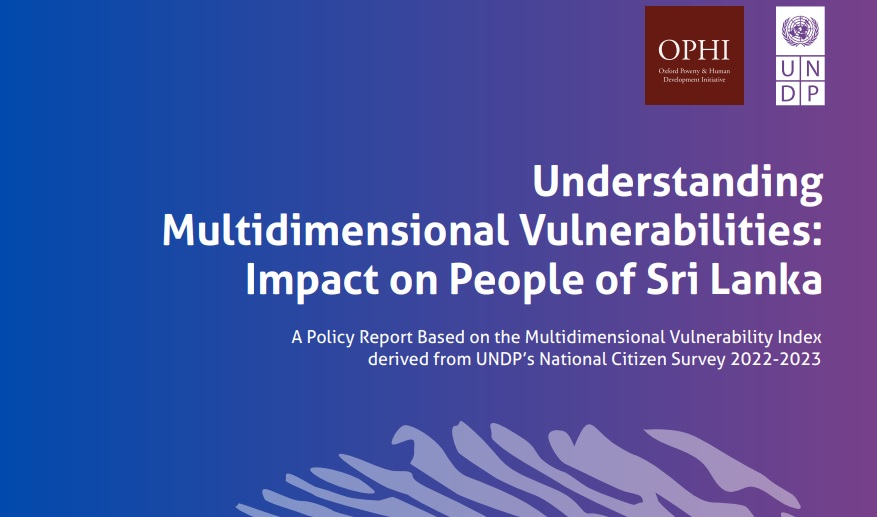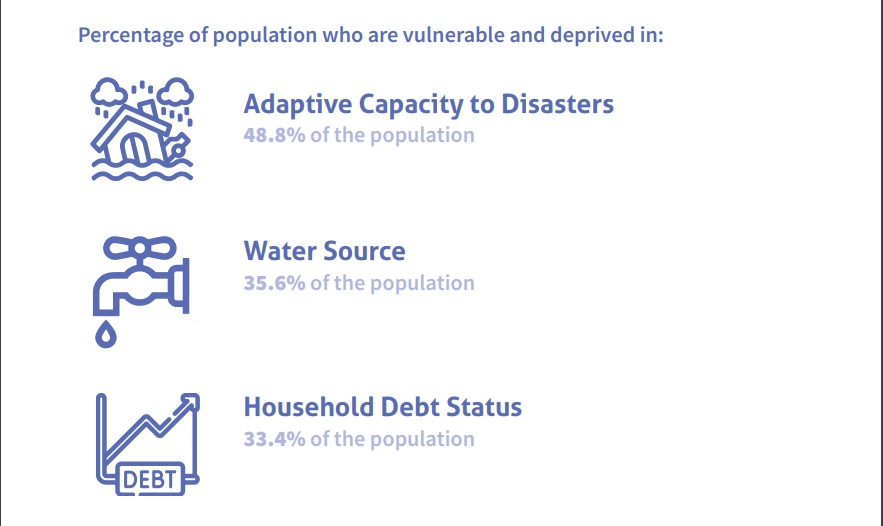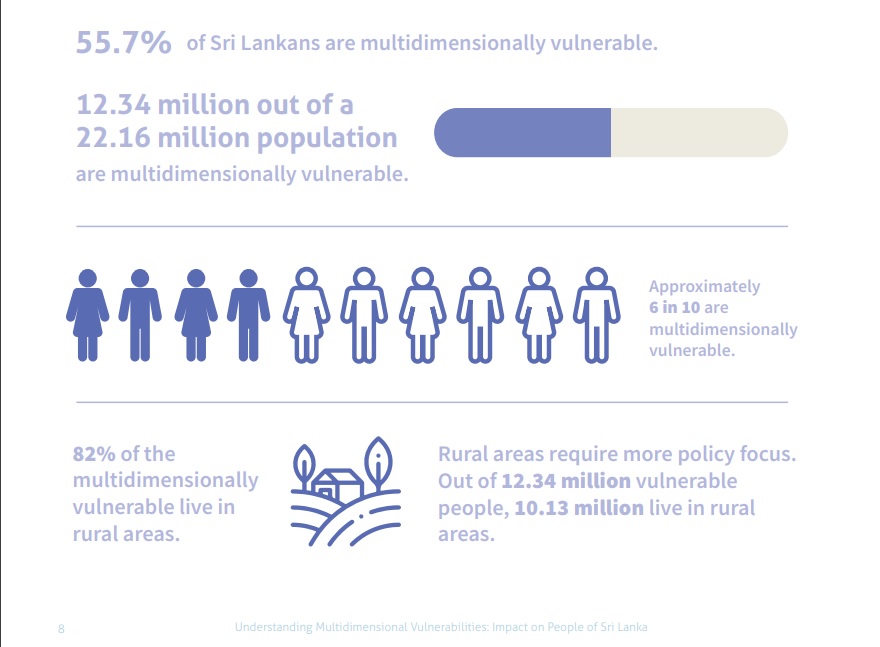The recent experience of Sri Lanka has been nothing but a series of challenging situations that have had a direct impact on the wellbeing of its people. The Easter Sunday attacks in 2019, the COVID-19 pandemic, and the onset of the country’s worst economic crisis in 2022, have had devastating impact on the livelihoods and resilience of the Sri Lankan people. These events have significantly impacted the socioeconomic landscape and quickly created new pockets of vulnerable communities across the country.
Over time, it has become very clear that the acuteness of the hardships experienced varied from one individual to another and one household to another. For those who faced sudden and drastic shocks, the risks of being trapped in the perpetual cycle of deprivations has increased. We therefore needed to better understand who was being hurt the most and left furthest behind.
To bridge the data gap, we at UNDP embarked on Sri Lanka’s first National Citizen Survey 2022-2023. It was intended to capture the ground realities faced by 25,000 households across the country to ensure national coverage
Key results of the Sri Lanka Multidimensional Vulnerability Index (MVI) 2022-2023
• Approximately six in ten (55.7 percent) people in Sri Lanka are multidimensionally vulnerable. That is, they are deprived in at least three of the 12 weighted indicators. This amounts to 12.34 of 22.16 million population being multidimensionally vulnerable.
• Among the 12.34 million individuals facing vulnerability, a considerable 10.13 million are rural residents, notably concentrated in the Eastern, North, and North Central provinces. Prominent factors contributing to rural multidimensional vulnerability encompass indebtedness (17.8 percent), resilience to disasters (13.1 percent), and access to water sources (10.7 percent).
• The national results of the MVI indicate that debt status, adaptive capacity to disaster and years of schooling are the primary factors driving Sri Lanka’s MVI.
• The highest contributor to the MVI is the indicator related to household debt. 33.4 percent of the population experience vulnerability and deprivation in debt-related indicators, including getting into debt for essential needs like food, medical care, and education, as well as pawning jewellery orselling items. In light of the economic crisis, it is highly probable that individuals’ debt situations have deteriorated, consequently resulting in elevated deprivations in the debt indicator.
• Adaptive capacity to disaster is the second largest contributor to the MVI. Nearly half of Sri Lanka’s population (48.8 percent) lacks disaster preparedness, a key vulnerability factor aggravated by accelerating climate risks. Notably, the adaptive capacity indicator exhibits the most substantial deprivation levels, emphasizing Sri Lanka’s inadequate readiness during disasters, which in turn exposes the population to heightened vulnerability.
• Male and female years of schooling stand out as the third most contributing indicators to the MVI, highlighting the critical need for key interventions to enhance education levels among both genders.
• 35.6 percent are vulnerable and deprived in relation to water sources, highlighting the critical need toprioritize efforts aimed at ensuring widespread access to water.
4 Comparisons will have to be done with caution since they are from different data sets (National MPI 2019 and MVI 2023).
• Several districts, including Ampara, Batticaloa, Kilinochchi, Mullaitivu, Nuwara Eliya, Puttalam, and Vavuniya, exhibit notable multidimensional vulnerability values, with over 65 percent of their populations identified as vulnerable. Gampaha and Colombo emerge as regions with the highest concentration of vulnerable individuals, attributable to their substantial population sizes.
Key recommendations
The MVI offers a set of key policy and programmatic recommendations, drawn from the analysis of the MVI 2023 results and enriched by insights gathered through the FGDs.
• Leverage the MVI for long-term policy and programme interventions and decision-making, by introducing a comprehensive policy coherence framework to enable seamless collaboration between various tiers of government. Crucial vulnerability indicators can be used to guide resource allocation and welfare programmes, ensuring effective assistance to vulnerable populations.
• Strengthen the use of the MVI and vulnerability indicators in social protection schemes to capture the depth and breadth of deprivations, offering a more holistic view of vulnerabilities, and allowing for tailor-made interventions and improved targeting of beneficiaries.
• Enhance resilience among Persons with Disabilities (PwDs) through the collection of sex/age/disability disaggregated data for better planning, resource allocation and targeting of service delivery on PwDs to ensure their social and economic participation; and develop tailormade programmes that enable PwDs to access employment opportunities in the public and private sectors and engage in self-employment activities.
• Design a sustainable approach to alleviate vulnerabilities of debt-burdened households by undertaking a comprehensive assessment to better understand how formal and informal credit markets function, including financial intermediaries, and their relationship with different types of households (female-headed, PwDs, MSMEs, etc.), that can contribute towards policy improvements.
• Develop a comprehensive strategy to enhance preparedness for climate-induced disasters by investing in and enhancing early warning systems, implementing sustainable farming methods that are adaptable to changing climatic conditions, and investing in improved oversight and enforcement mechanisms.
• Build climate-resilient water systems that safeguard equitable access to water resources in the face of climate challenges by initiating greater investments in rural water infrastructure, integrated water resource management initiatives, and conducting regular assessments on water productivity to enhance knowledge and implement policies that can advance equitable water allocation in the country.
• Invest in expanding equitable access to quality education by broadening study streams and learning pathways, improving access to tools and platforms in schools to enable integration of technology into education, and placing less weightage on final, summative examinations and increasing emphasis on formative, potentially project-based assignments that evaluate critical thinking, analytical skills, and other competencies.
• Establish systems and mechanisms to incorporate the MVI as the government’s overarching metric for measuring multidimensional vulnerability, and as a reliable monitoring and assessment tool.
Multidimensional vulnerabilities often intersect across various aspects of people’s lives, necessitating a holistic approach that draws on expertise and resources from diverse sectors. Therefore, to help reduce multidimensional vulnerabilities, the significance of cross-sectoral collaboration cannot be overstated. Collaborating across sectors enables the pooling of knowledge, skills, and resources to design interventions that address vulnerabilities comprehensively. By understanding these complexities, policymakers, stakeholders, and international partners can work collaboratively to formulate targeted strategies that enhance resilience, mitigate risks, and pave the way for a more secure and sustainable future for Sri Lanka.
Full Report: undp_multidimensional_vulnerability_report 2023 sep


